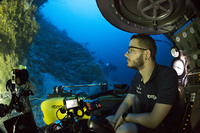Behind the science:
Depth-Dependent Structuring of Reef Fish Assemblages From the Shall...
2019, August 13
Posted by Veronica Radice
Fields
Biodiversity
Community structure
Disturbances
Focusgroups
Fishes
Locations
Bermuda
Platforms
In-situ instrumentation
Manned Submersible
Rebreather
“Depth-stratified reef fish assemblages across shallow to mesophotic and rariphotic reefs”
What was the most challenging aspect of your study (can be anything from field, lab to analysis)?
The logistical difficulties in accessing and recording marine life in deep waters using submersibles. Submersibles are a great tool for recording and observing marine life, including fish communities, but complex topography, and occasionally current conditions, often made their deployment challenging and time-consuming. However, they offer scientists, policy makers and government officials an unparalleled opportunity to witness deep reef habitats first hand, and make behavioural observations that are otherwise difficult to obtain, so they are gradually becoming a very important exploration tool for marine scientists and for ocean literacy and advocacy around the globe. We also encountered issues relating to our GoPro Stereo Video System (i.e. flooding, batteries running out, cameras not switched on). Several dives lost one of the SVS cameras meaning that additional video was available for abundance counts of fish only as length-biomass measurements are only possible with stereo-video setup.
What was the most memorable moment in undertaking this study?
This was memorable but not for good reason. During our expedition we discovered widespread presence of invasive lionfish in the mesophotic coral ecosystems of Bermuda. In fact, lionfish were found in much deeper waters below the mesophotic zone, all the way down to a record-low of 304 m, highlighting just how successful this voracious mesopredator is at colonising new marine habitats.
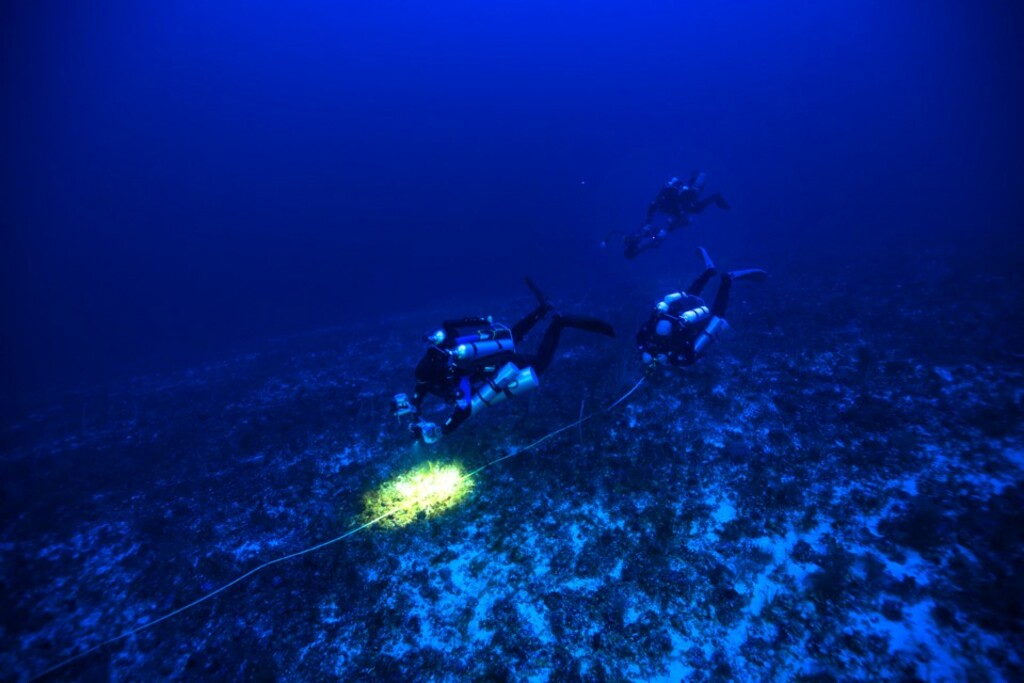 Technical diving team conducting transect surveys at mesophotic coral reef habitats using a measuring tape as a survey line, and a stereo-video system made up of two cameras in order to record fish and benthic communities.
(C) Nekton
[CC BY-NC 4.0]
Technical diving team conducting transect surveys at mesophotic coral reef habitats using a measuring tape as a survey line, and a stereo-video system made up of two cameras in order to record fish and benthic communities.
(C) Nekton
[CC BY-NC 4.0]
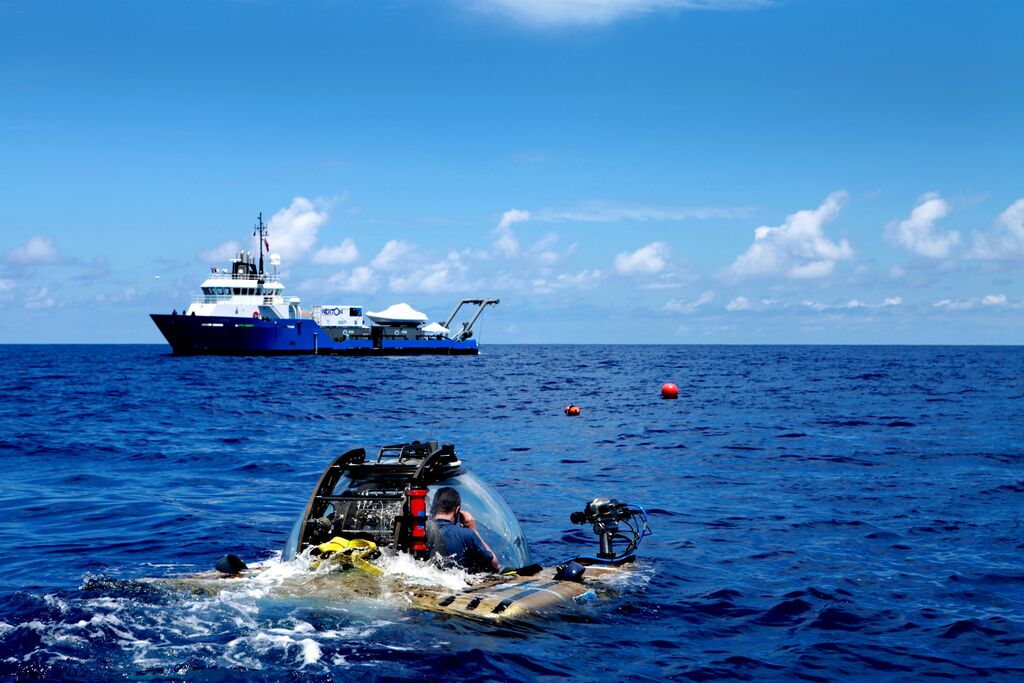 A Triton submersible ready to dive and explore the deep waters around Bermuda.
(C) Nekton
[CC BY-NC 4.0]
A Triton submersible ready to dive and explore the deep waters around Bermuda.
(C) Nekton
[CC BY-NC 4.0]
What was your favorite research site in this study and why?
The seamount Plantagenet Bank. Plantagenet supported a greater amount of large predatory fish, and we also noted the presence of some large zooplanktivores such as manta rays that probably made use of the increased plankton abundance trapped on the summit of the seamount. We documented macroalgal beds at 45 m and 60 m, which although present in the other locations, were not as extensive as at Plantagenet.
Other than your co-authors, with whom would you like to share credit for this work?
We wish to thank all of our amazing partners and supporter in Bermuda, especially T. Warren from the Bermuda Government, and G. Goodbody-Gringley and C. Flook from the Bermuda Institute of Ocean Sciences, for their assistance, advice and participation in the XL Catlin Deep Ocean Survey Bermuda. In addition we also acknowledge S. Brooks for the assisting with the stereo-video system footage calibration; H. Hirsch (Stanford University) for providing the CTD data; M. C. Stinchcombe (National Oceanography Centre, Southampton) for processing the nutrient data, and M. Taylor (University of Essex) for early discussions. Finally, we would also like to thank the crew and technicians of the Baseline Explorer, Brownies Global Logistics and Triton Submersibles (R. Carmichael, L. Bennett, J. Addaway, A. Adams, T. Cole, K. Hauge, R. Holt, D. Jablonski, S. Spaulding, G. Whitehead, S. Ziegler, P. Lahey, K. Magee), and the technical divers of Global Underwater Explorers (M. McClellan, M. Tanguay, S. Bird, K. Dow, G. Blackmore, J. P. Bressor, S. E. Kim, and K. Kim).
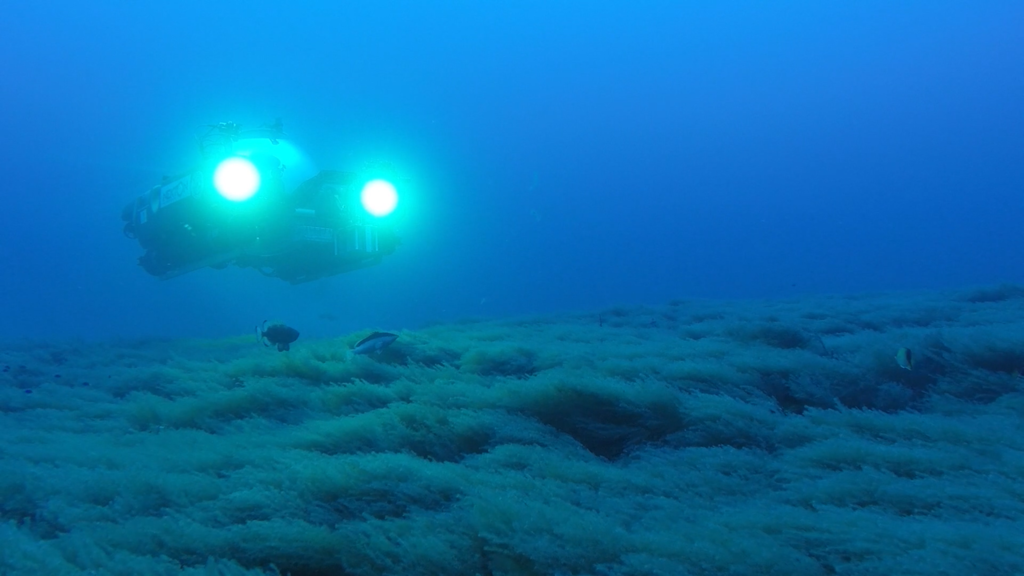 Submersible observing fish communities among dense macroalgal beds on the summit of the Plantagenet Bank seamount.
(C) Nekton
[CC BY-NC 4.0]
Submersible observing fish communities among dense macroalgal beds on the summit of the Plantagenet Bank seamount.
(C) Nekton
[CC BY-NC 4.0]
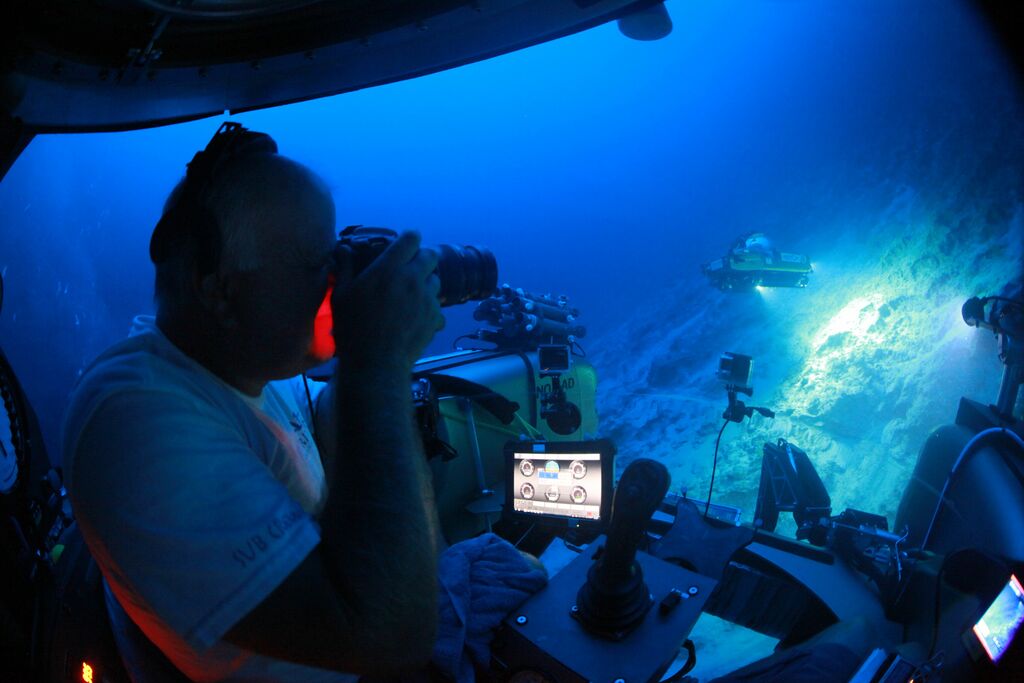 Submersibles offer passengers a great opportunity to record and observe marine life in action.
(C) Nekton
[CC BY-NC 4.0]
Submersibles offer passengers a great opportunity to record and observe marine life in action.
(C) Nekton
[CC BY-NC 4.0]
Any important lessons learned (through mistakes, experience or methodological advances)?
The discovery of the a unique biological zone between ~150‒300m first in Curacao and now Bermuda, termed the rariphotic zone, begs the question ‘is a unique feature of the western central Atlantic region or is found across reefs worldwide?’. More studies are needed to elucidate this, but for Bermuda at least, the distinctiveness of the deeper reef fish faunas combined with observed signs of stressors such as the occurrence of invasive species (e.g., lionfish) and the presence of benthic debris (e.g., fishing gear) at those depths, highlight the inherent vulnerability of the deeper fish assemblages to anthropogenic pressures. Thus, we suggest that deeper mesophotic and rariphotic coral reefs should be more explicitly managed in terms of targeted fisheries and for conservation purposes.
Can we expect any follow-up on this work?
At Nekton Deep Ocean Research Institute we are particularly interested about connectivity of coral reef communities (both fish and benthos) between shallow, mesophotic and deeper reefs, and what this means in the context of increased human impacts on our oceans. Having explored this question in Bermuda, we now want to see if our findings are applicable to other parts of the world. Currently, we are focusing on the little known reefs of the Western Indian Ocean. We have just completed an expedition in Seychelles in March-April 2019, where we explored reef ecosystems between 10‒350 m posing the same question of connectivity across depth and location. We are currently processing the data and expect to have some first results in 2020.
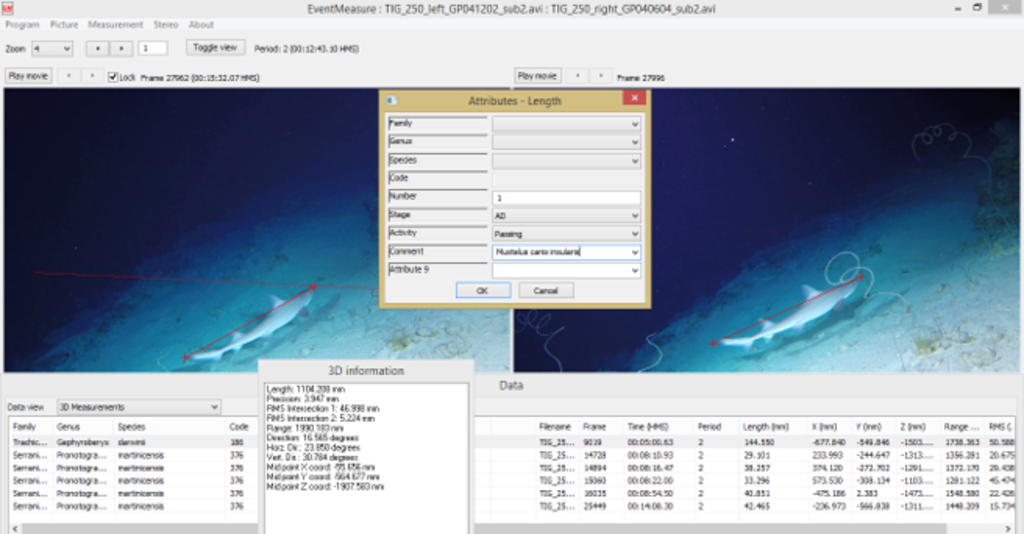 Stereo-video footage allowed us to measure length of fish using EventMeasure and then convert it to biomass.
(C) Erika Gress
[CC BY-NC 4.0]
Stereo-video footage allowed us to measure length of fish using EventMeasure and then convert it to biomass.
(C) Erika Gress
[CC BY-NC 4.0]
Featured article:
|
|
Depth-Dependent Structuring of Reef Fish Assemblages From the Shallows to the Rariphotic Zone | article Stefanoudis PV, Gress E, Pitt JM, Smith SR, Kincaid T, Rivers M, Andradi-Brown DA, Rowlands G, Woodall LC, Rogers AD (2019) Front Mar Sci 6:1-16 |

|
